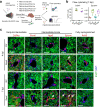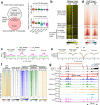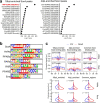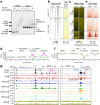This is a preprint.
Physiological reprogramming in vivo mediated by Sox4 pioneer factor activity
- PMID: 36824858
- PMCID: PMC9948957
- DOI: 10.1101/2023.02.14.528556
Physiological reprogramming in vivo mediated by Sox4 pioneer factor activity
Update in
-
Cellular reprogramming in vivo initiated by SOX4 pioneer factor activity.Nat Commun. 2024 Feb 26;15(1):1761. doi: 10.1038/s41467-024-45939-z. Nat Commun. 2024. PMID: 38409161 Free PMC article.
Abstract
Tissue damage elicits cell fate switching through a process called metaplasia, but how the starting cell fate is silenced and the new cell fate is activated has not been investigated in animals. In cell culture, pioneer transcription factors mediate "reprogramming" by opening new chromatin sites for expression that can attract transcription factors from the starting cell's enhancers. Here we report that Sox4 is sufficient to initiate hepatobiliary metaplasia in the adult liver. In lineage-traced cells, we assessed the timing of Sox4-mediated opening of enhancer chromatin versus enhancer decommissioning. Initially, Sox4 directly binds to and closes hepatocyte regulatory sequences via a motif it overlaps with Hnf4a, a hepatocyte master regulator. Subsequently, Sox4 exerts pioneer factor activity to open biliary regulatory sequences. The results delineate a hierarchy by which gene networks become reprogrammed under physiological conditions, providing deeper insight into the basis for cell fate transitions in animals.
Conflict of interest statement
Competing interests: The authors declare no competing interests.
Figures






References
Publication types
Grants and funding
LinkOut - more resources
Full Text Sources
Research Materials
